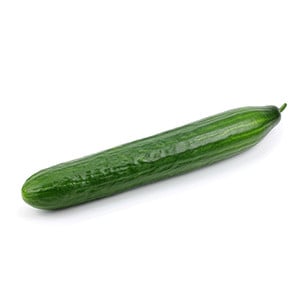Libelle F1

Variety
Libelle F1
Approved Data
created by steffen a. at 25.02.2023
Features
Growth habit
kompakt
No fruit
Fruit shape
länglich
Color
carrot like
Location
Gewächshaus
Freiland
$#!@
Balkon
Beet
Topf
geschützt
Geschmack
saftig
Season Overview
Propagating
Planting
Harvest
J
F
M
A
M
J
J
A
S
O
N
D
Description
The 'Libelle' pickling cucumber is an F1 hybrid that will delight you with its early and high yields. The earliest possible time for sowing the cucumber seeds is April. As a pre-culture, the seeds are first sown indoors and the emerged young plants are then planted outdoors from mid-May. Direct sowing outdoors is of course also possible, but only in May or June. 'Libelle' likes a sunny position, grows best in loose, nutrient-rich soil and has a high water requirement. Regular and sufficient watering is therefore essential for successful cultivation. As 'Libelle' is naturally resistant to diseases such as the cucumber mosaic virus or cucumber scabies, you don't usually have to worry about any significant cultivation problems. The first fruits can be harvested in July. Their shape is long and slender and their shiny skin is slightly pocked and dark green in color. You can enjoy new cucumbers again and again until September.
F1 Hybrid
Not frost resistant
Growing tips
As cucumbers are quite sensitive to the cold, you should only plant them out after the Ice Saints. They also need a lot of warmth during growth and a constant supply of water is also necessary. Stress conditions such as temperature fluctuations, lack of water or frequent touching lead to the formation of bitter substances. A cultivation break of 3-4 years should be observed. With a height of 1 m to 1.5 m, the 'Libelle F1' cucumber has a climbing habit. Regular harvesting increases the yield as more new flowers are formed.
Details
Light requirement
Sunny
Water requirement
Wet
Soil
Light (sandy)
Nutrient requirement
High
Plant distance
50 cm
Row spacing
90 cm
Seeding depth
2 cm
Companion Plants
Alfalfa / Lucerne
Asparagus
Basil
Bean (Broad bean / Faba bean / Field bean)
Bean (Dwarf bean)
Bean (Runner bean)
Beetroot
Broccoli
Brussels sprouts
Cabbage (Cabbage)
Cabbage (Savoy cabbage)
Caraway / Meridian fennel / Persian cumin
Cauliflower
Celery (Celeriac / Celery root)
Celery (Celery)
Chervil
Chili
Collard greens (Kale)
Collard greens (Tuscan kale / Dinosaur kale / Palm tree kale)
Common marigold
Coriander / Cilantro
Corn / Maize
Dill
Fennel
Florence fennel / Finocchio
Garlic
Kohlrabi / German turnip / Turnip cabbage
Lentils
Lettuce (Lettuce)
Lettuce (Radicchio / Italian chicory)
Marjoram
Nasturtium
Onion
Onion (Spring onion)
Oregano
Pak Choi
Parsley
Pea
Pepper / Paprika
Soybean
Sunflower
Tarragon
Antagonistic Plants
Diseases
Soft rot
Root Rot
Dry rot of crucifers
Grey mold
Fusarium
Downy mildew
Angular leaf spot of cucumber
Powdery mildews
Ascochyta blight
Pests
Thrips
Caterpillars
Leaf-miner flies
Lygus pratensis
Aphids
Spider mites
White fly